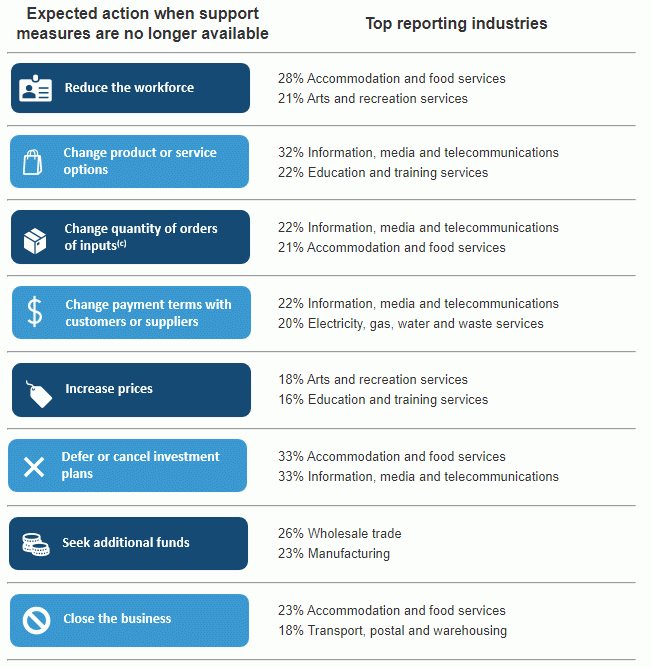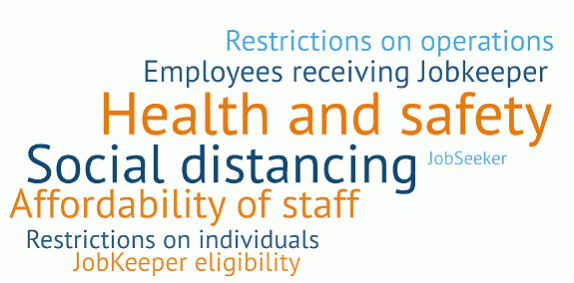This publication provides information on the incidence and nature of impacts due to COVID-19, as experienced by businesses operating in Australia.
Topics covered in this release include:
- Business revenue, operating expenses and employment, past month and next month;
- Support measures used by businesses and expected actions when they are no longer available;
- Workforce difficulties experienced by employing businesses.
The collection was conducted through a telephone survey between 15 July and 23 July 2020. The sample size was 2,000 businesses and the final response rate was 50% (997 responding businesses).
This release forms part of the suite of additional products that the ABS is producing to measure the impact of COVID-19. Future information collected in this survey will evolve to maintain relevance in a changing environment.





